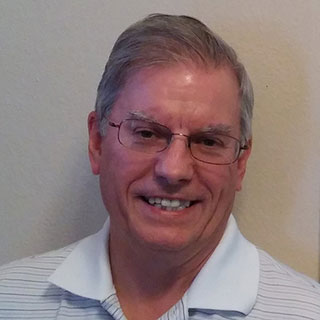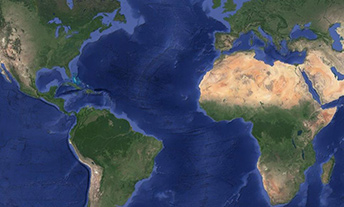
Michael Conley
NASA Citizen Scientist
Contents
- Education
- What motivated you to volunteer as a NASA citizen scientist? How did you learn about NASA citizen science?
- What do you do when you’re not doing science with NASA? Tell us about your job and your hobbies.
- What have you learned about the process of science from your time on NASA citizen science projects?
- Which peer-reviewed research publications have you contributed to through your citizen science work? What was your role in the research and writing process?
- We’re aware that not everyone has equal access to speedy computers and internet signals. Was this a problem for you? And if it was, how did you overcome it?
- What are your favorite NASA citizen science projects to work on, and why?
- What have you discovered or learned as a NASA citizen scientist?
- What advice would you give to others who might want to volunteer with NASA citizen science?
- Who have you met during your NASA citizen science work who inspires you?
- How much time do you spend on NASA citizen science projects?
- Additional Links
- Where are they from?
Education
Patrick Henry High School
University of Minnesota
Electrical Engineering
Michael is retired from the electronics manufacturing industry.
What motivated you to volunteer as a NASA citizen scientist? How did you learn about NASA citizen science?
As a lifelong amateur astronomer, I have always enjoyed imaging the heavens. I have spent many hours photographing objects in the sky as close as our own atmosphere (like meteors and auroras), or further out in our solar system (like the planets and asteroids). Or even yet further out into our Milky Way galaxy (like the nebulae and globular clusters). And even to the ends of the universe (my furthest image is of a faint galaxy some 8 billion light years from Earth).
So when an opportunity came up to participate in an experiment to image the Sun during the 2017 Total Eclipse, I jumped at the chance. And thanks to my extensive background in imaging, I was fortunate enough to be chosen as the Oregon state coordinator responsible for getting and training observers for the sites selected to image the Sun that remarkable day.
What do you do when you’re not doing science with NASA? Tell us about your job and your hobbies.
Lucky for me, I am now retired and can devote far more time both day and night doing imaging. On clear days, I can work on the Sun or even the Moon. And when the Sun goes down, I turn to the planets, stars, clusters and galaxies.
What have you learned about the process of science from your time on NASA citizen science projects?
I think the most satisfying thing I have learned from being a citizen scientist is that so much good work can be done by equipment that the average person can afford. This makes it possible to get involved in so many other citizen science projects.
After the 2017 total eclipse of the Sun, I was able to participate in the 2019 Transit of Mercury project and I have submitted data for an exoplanet transit.
Which peer-reviewed research publications have you contributed to through your citizen science work? What was your role in the research and writing process?
The Citizen CATE experiment during the 2017 solar eclipse was the basis of a paper with analysis of the vast amount of data collected from the eclipse (mine was but one of about 68 sites). My data for exoplanet HD189733b was published by Columbia University in a paper titled, “Utilizing Small Telescopes Operated by Citizen Scientists for Transiting Exoplanet Follow-up.”
We’re aware that not everyone has equal access to speedy computers and internet signals. Was this a problem for you? And if it was, how did you overcome it?
The computer (and other necessary imaging hardware) used in the CATE experiment was well thought out in advance. It performed quite well, acquiring the sequence of eight increasingly longer exposures and repeating the cycle throughout the two-minute eclipse (at my location). Since our locations were often quite remote, it was good that an internet connection wasn’t required for the initial collection of data (images).
What are your favorite NASA citizen science projects to work on, and why?
Of course, my first project – the CATE experiment stands out. It introduced me to the concept of citizen science and how someone with a non-degreed background can make a valuable contribution to the effort and make new discoveries in astronomy.
From this, I got involved in the Transit of Mercury project and am currently working on an exoplanet project.
I have a great passion for astrophotography and all these projects speak to that. If doing that can contribute to scientific discovery, that’s a win-win in my book.
What have you discovered or learned as a NASA citizen scientist?
I think the most important thing I have learned from doing citizen science work is that you don’t need super expensive equipment to try to tackle important scientific questions. I typically do all of my imaging by myself, and I was surprised how much I learned and enjoyed working with teams to get the job done. I had a big responsibility to help with training the eclipse teams to use the equipment. Along the way, I learned about software and imaging techniques that I had not seen before.
What advice would you give to others who might want to volunteer with NASA citizen science?
My advice to anyone who is thinking about volunteering for a citizen science project is to look over the offerings and find one that you believe you have a passion for. Your passion will be the fuel that excites you to do the best you can for the project and provide you with a great sense of accomplishment when you see it through to the end.
Who have you met during your NASA citizen science work who inspires you?
Dr. Matt Penn from the National Solar Observatory (NSO) really inspired me with his dedication and hard work on the CATE project of 2017. This was a huge project spanning the length of the U.S. with observer’s sites and all the technical details that had to be addressed to make this a success. That was a huge amount of work, and – even with people helping him – he still took on the lion’s share of the work. Also, I was very impressed with how he always asked for suggestions to improve the process we were using to get the data.
How much time do you spend on NASA citizen science projects?
Currently, I’m only doing the exoplanet project. The difficulty is finding one that transits at a convenient time for my location and equipment. If I find one, it generally requires imaging the exoplanet for about four hours (making for a long night). I did one recently though – WASP33b on Oct. 16, 2022. These are challenging, but it is very rewarding when I bag one – as if I were a big game hunter tracking my heavenly quarry.
Visit the complete collection of NASA citizen science projects and start contributing today!
Additional Links
Where are they from?
Planetary science is a global profession.



























